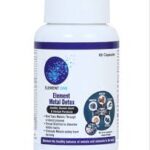Introduction
In today’s digitally connected and customer-centric economy, businesses thrive or struggle based on how well they listen and respond to their customers. Gone are the days when quarterly surveys or occasional feedback forms sufficed. Today’s leading organizations embed customer feedback into the very fabric of their operations, creating continuous, intelligent feedback loops that drive real-time improvements and innovation.Microsoft Dynamics 365 Customer Engagement provides a robust platform for achieving exactly that.
This article explores how businesses can integrate Voice of the Customer (VoC) programs directly into their Dynamics 365 engagement pipelines to enhance customer satisfaction, strengthen loyalty, and accelerate growth.
Understanding the Voice of the Customer (VoC)
Voice of the Customer (VoC) refers to the process of collecting, analyzing, and acting on customer feedback to improve products, services, and experiences. It encompasses multiple channels—email surveys, website feedback, social listening, customer service interactions, and even sentiment analysis.
Modern VoC programs go beyond just asking for feedback; they turn feedback into insights and insights into action. Microsoft Dynamics 365 Customer Engagement enables this transformation by acting as both a data hub and an action center.
Why Feedback Loops Matter in Engagement Pipelines
A feedback loop is the process through which information gathered from customers is used to enhance interactions, refine strategies, and personalize experiences. In Microsoft Dynamics 365 Customer Engagement, feedback loops are essential for:
- Measuring customer satisfaction at every touchpoint
- Identifying areas for service improvement
- Enabling proactive issue resolution
- Prioritizing feature requests or product changes
- Enhancing personalization in marketing and sales
With seamless feedback integration, your Dynamics 365 engagement pipeline evolves from a linear, transaction-driven tool into a dynamic, customer-driven engine.
Key Components of a VoC Program in Microsoft Dynamics 365 Customer Engagement
To create a successful VoC program in Microsoft Dynamics 365 Customer Engagement, businesses must focus on several key components:
1. Feedback Collection Channels
Start by collecting feedback at relevant stages in the customer journey. Dynamics 365 allows you to embed surveys using Microsoft Forms Pro (now known as Dynamics 365 Customer Voice), send email follow-ups, and trigger feedback requests based on specific actions such as:
- Purchase completion
- Case resolution
- Webinar attendance
- Sales meeting outcomes
You can also use Power Automate to build flows that automatically send feedback forms based on real-time triggers.
2. Centralized Data Management
All feedback collected through Dynamics 365 Customer Voice can be directly stored and managed in the Microsoft Dataverse. This centralized repository enables advanced analytics, segmentation, and reporting. Combined with the rich customer profiles in Microsoft Dynamics 365 Customer Engagement, it allows organizations to view feedback in the context of full customer history and behaviors.
3. Sentiment and Text Analytics
Dynamics 365 integrates with Azure Cognitive Services to analyze open-ended responses. Natural language processing (NLP) can assess sentiment, extract keywords, and detect emerging themes. This gives you a deeper, more nuanced understanding of what your customers are truly saying—far beyond numerical ratings.
4. Real-Time Dashboards and Reporting
Using Power BI or built-in dashboards in Dynamics 365, businesses can visualize feedback trends in real time. You can track Net Promoter Scores (NPS), Customer Satisfaction Scores (CSAT), and Customer Effort Scores (CES), as well as custom KPIs aligned to your business objectives.
These dashboards can be configured by role—so that marketing, sales, customer service, and product teams each get relevant insights tailored to their domain.
5. Workflow Automation
A feedback loop isn’t complete without action. Microsoft Dynamics 365 Customer Engagement enables businesses to act on feedback through automated workflows. For example:
- Automatically create a case if a customer reports a problem.
- Alert a customer service manager if an NPS response is detractor-level.
- Trigger a thank-you email for positive responses.
These workflows ensure timely responses, reinforce engagement, and reduce customer churn.
6. Continuous Improvement Framework
Over time, businesses can use aggregated feedback data to prioritize strategic changes, from pricing adjustments to UI improvements and policy revisions. Because Dynamics 365 integrates with the broader Microsoft ecosystem, these insights can also drive innovation in product development, customer service training, and go-to-market strategies.
Benefits of Integrating Feedback Loops into Dynamics 365
When effectively integrated into Microsoft Dynamics 365 Customer Engagement, feedback loops deliver measurable business value:
1. Higher Customer Satisfaction
Real-time monitoring and rapid response improve customer perceptions and show that their voices are heard and respected.
2. Reduced Churn and Improved Retention
By addressing pain points early and proactively, businesses can retain more customers and build stronger relationships.
3. Enhanced Product and Service Innovation
Insights from customer feedback highlight unmet needs, guiding R&D and innovation efforts toward what customers truly want.
4. More Personalized Experiences
Feedback data enriches customer profiles, allowing for more targeted marketing, smarter upselling, and humanized engagement.
5. Increased Internal Accountability
Transparent feedback data creates a culture of accountability, with individual teams able to track their impact on customer satisfaction.
Practical Use Case: A Telecom Company in Singapore
Consider a telecom provider in Singapore implementing Microsoft Dynamics 365 Customer Engagement. They launch a new service bundle and use Dynamics 365 Customer Voice to gather post-subscription feedback.
If a customer provides a low CSAT score citing poor onboarding, a case is created in Dynamics 365. A support manager follows up within an hour, resolving the issue. The marketing team later sees patterns of dissatisfaction with onboarding and refines the welcome campaign. Over time, NPS scores rise by 15%.
This example showcases how integrated feedback loops can close the gap between customer perception and business action.
Best Practices for VoC Integration in Dynamics 365
- Start small, scale fast: Begin with feedback at critical points like support resolution, then expand.
- Automate but personalize: Automation saves time, but messages must feel genuine and tailored.
- Involve every department: Feedback should be shared across sales, marketing, service, and product.
- Ensure data privacy: Use role-based access and compliance frameworks to manage sensitive feedback data securely.
- Act and close the loop: Acknowledge feedback, communicate changes, and let customers know their voices matter.
Final Thoughts
Integrating Voice of the Customer into Microsoft Dynamics 365 Customer Engagement is more than a technical project—it’s a cultural shift toward customer-centricity. It enables organizations to continuously listen, learn, and adapt to meet customer expectations in real time.
With Microsoft Dynamics 365 Customer Engagement as the backbone of your VoC program, you can unlock the full potential of feedback data, transforming it into a competitive advantage and building deeper, more meaningful customer relationships.
If your organization is serious about aligning with customer needs and staying agile in a competitive market, embedding intelligent feedback loops into your Dynamics 365 engagement pipeline is not optional—it’s essential.


